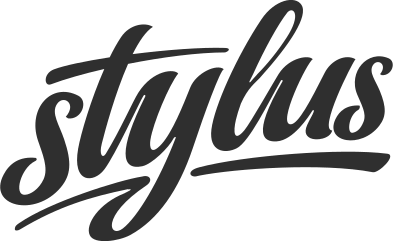
@extend
The Stylus @extend directive is inspired by (and essentially the same as) the SASS Implementation, with few subtle differences. This feature significantly simplifies maintenance of semantic rulesets that inherit from other semantic rulesets.
“Extending” with mixins
Although you can use mixins to achieve a similar effect, this can lead to duplicate CSS. A typical pattern is to define several classes as shown below, then combine them on the element such as “warning message”.
While this technique works just fine, it’s difficult to maintain.
.message,
.warning {
padding: 10px;
border: 1px solid #eee;
}
.warning {
color: #E2E21E;
}
Using @extend
To produce this same output with @extend, simply pass it the desired selector (note that @extend and @extends are equal, one is just an alias of another). Stylus will then append the .warning selector to the existing .message ruleset. The .warning class then inherits properties from .message.
.message {
padding: 10px;
border: 1px solid #eee;
}
.warning {
@extend .message;
color: #E2E21E;
}
Here’s a more complex example, demonstrating how @extend cascades:
red = #E33E1E
yellow = #E2E21E
.message
padding: 10px
font: 14px Helvetica
border: 1px solid #eee
.warning
@extends .message
border-color: yellow
background: yellow + 70%
.error
@extends .message
border-color: red
background: red + 70%
.fatal
@extends .error
font-weight: bold
color: red
Yielding the following CSS:
.message,
.warning,
.error,
.fatal {
padding: 10px;
font: 14px Helvetica;
border: 1px solid #eee;
}
.warning {
border-color: #e2e21e;
background: #f6f6bc;
}
.error,
.fatal {
border-color: #e33e1e;
background: #f7c5bc;
}
.fatal {
font-weight: bold;
color: #e33e1e;
}
Where Stylus currently differs from SASS is, SASS won’t allow @extend nested selectors:
form
button
padding: 10px
a.button
@extend form button
Syntax error: Can't extend form button: can't extend nested selectors
on line 6 of standard input
Use --trace for backtrace.
With Stylus, as long as the selectors match, it works!
form
input[type=text]
padding: 5px
border: 1px solid #eee
color: #ddd
textarea
@extends form input[type=text]
padding: 10px
Yielding:
form input[type=text],
textarea {
padding: 5px;
border: 1px solid #eee;
color: #ddd;
}
textarea {
padding: 10px;
}
Extending multiple selectors
Stylus allows you to extend multiple selectors at once, just write them with the comma:
.a
color: red
.b
width: 100px
.c
@extend .a, .b
height: 200px
Yielding:
.a,
.c {
color: #f00;
}
.b,
.c {
width: 100px;
}
.c {
height: 200px;
}
Extending placeholder selectors
Stylus has a feature similar to the one in Sass — placeholder selectors.
Those selectors should start with a $ symbol (for example, $foo), and are not yielded in the resulting CSS. But you can still extend them:
$foo
color: #FFF
$foo2
color: red
.bar
background: #000
@extends $foo
.baz
@extends $foo
Yielding:
.bar,
.baz {
color: #fff;
}
.bar {
background: #000;
}
Note that if the selector is not extended, it won’t be in the resulting CSS, so it’s a powerful way to create a library of extendable code. While you can insert code through mixins, they would insert the same code every time you use them, while extending placeholders would give you compact output.
Optional extending
Sometimes it might be usefull to be able to extend something that might or might not exist depending on the context. You can suffix any selector with !optional to achieve this:
$specialDesign
color: #FFF
.btn
@extend .design !optional, $specialDesign !optional
Yielding:
.btn {
color: #fff;
}
